Industry Tutorials
Monday, 3 December 2012
9:00 – 12:00
IF1: Small Cell and Heterogeneous Network (HetNet) Deployment
Instructors:
Jie Zhang, University of Sheffield, UK
Guilluame de la Roche, Mindspeed, France
David López-Pérez, Bell Labs, Alcatel-Lucent, Ireland
Hui Song, Ranplan, UK
Future networks will be heterogeneous in terms of radio access technologies (RATs), fixed or mobile, access node types, and long or short range. In Heterogeneous Networks (HetNets), small cell will play an important role, absorbing the vast majority of traffic.
Small cell and HetNet deployment will impose an enormous challenge for network operators including:
- Joint indoor-outdoor HetNet planning and optimization
- Seamless indoor and outdoor coverage, capacity
- Interference control and management
- Self-organizing networks (SONs)
- Trade-off between energy and spectrum efficiency
- Mobility management and handover control
- Flexible backhauling
- Integration of fixed, Wi-Fi and cellular networks
Experts from network operators, telecom vendors and academia will discuss the challenging issues of HetNet deployment and optimization. The session will encourage industry and academia interactions. The target audience includes network operators, telecom vendors and research organizations.
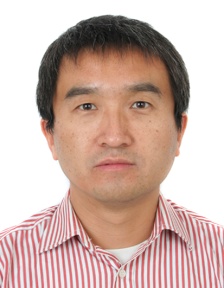
Jie Zhang, Professor
University of Sheffield, UK |
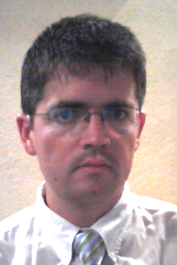
Guilluame de la Roche
Wireless Engineer
Mindspeed, France |
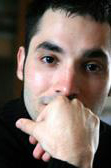
David López-Pérez, Research Engineer, Bell Labs, Alcatel-Lucent, Ireland |
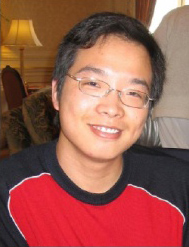
Hui Song, R&D Manager, Ranplan, UK |
Monday, 3 December 2012
9:00 – 12:00
IF2: Digital Games for “People” Networking – Challenges & Opportunities
(Internet games accessories raffled at the conclusion of the Tutorial!)
Instructors:
Daniel Frost, University of California, Irvine, USA
Ross Smith, Microsoft, USA
Narisa Chu, CWLab International, USA
Games networking with mobility and its professional and social impact will be noted, anticipating a new way of people networking in the professional environment, social circles and private settings. “Productivity and cultural games” have been created and exercised to improve software engineering processes, intergeneration communication, entertainment, education and personal healthcare.
What are the magic technology, art and social components that make games into effective communication tools?
The essential elements of games development process and techniques will be introduced. Various applications will demonstrate the process and technical components required of games development for various applications. Various game platforms will be described to depict the foundation leading to people networking.
Processes of achieving various applications will be explored and demonstrated with Internet tools that might have or might not have meant for games development and research. Final dialog will explore whether game is the means, communication is the end; or vice versa, in this vastly dynamic networking age.

Daniel Frost, Professor, University of California, Irvine, USA |

Ross Smith, Director of Test, Lync Client, Microsoft, USA |
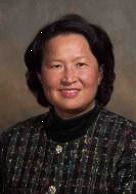
Narisa Chu, Co-founder, CWLab International, USA |
|
day, 3 December 2012
14:00 – 17:00
IF3: Programmable Cloud Computing and Networking

Instructors:
Masum Hasan and Edgar Magana, Cisco, USA
Details of Cloud computing and networking will be covered with open source Cloud management framework OpenStack and programmable networking or Software Define Network (SDN) framework.
Outline:
1. Cloud Computing Introduction:
a. IaaS, PaaS and SaaS
b. Public, Private and Hybrid Clouds
c. Cloud DC Network Architecture
d. Enterprise and Cloud DC Application Tier Architecture
e. Introduction to Cloud Management Framework Architecture
f. Cloud Abstractions
g. Cloud related Service and Management Interfaces
h. REST API
i. Hypervisor or Virtual Machine Technologies focusing on KVM and KVM
j. Networking
k. VM-aware Networking
l. Virtual Private Cloud
2. OpenStack Framework Architecture, Internal Workings and Service APIs
a. Use Cases and Demos of Cloud Usage Scenarios
b. Functional Demos Conducted on Real Testbed Cloud Infrastructure.
3. SDN frameworks
a. Cisco Network Programmability Framework - 1PK
b. OpenFlow
c. Use Cases for Cloud Functions with Integration to OpenStack
|
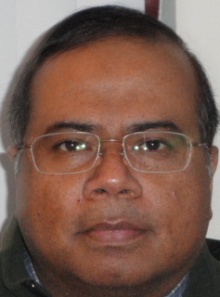
Masum Hasan, Principal Engineer / Architect, Cisco, USA
|
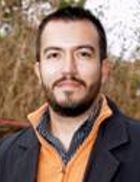
Edgar Magana
Technical Leader / Researcher
Cisco USA |
|
|
Monday, 3 December 2012
14:00 – 17:00
IF4: Internet as a New Paradigm
Instructor:
Bob Frankston, IEEE Fellow, USA
The Internet will be revisited from first principles starting with local connectivity among devices and how it enables innovation within the home and other venues. These relationships are extended beyond local connectivity to embrace the world in communications.
The Internet is an entirely different paradigm from telecommunications – one that frees us from the narrow confines of channels and permits us to innovate and create new products and services. The power of the Internet comes from what we do with it and not the artifacts of today’s implementation – the networking devices, IP addresses, broadband, spectrum, etc.
Outline:
1. Introduction
2. Key Concepts
a. Communications “usage” disconnected from “channels”
b. “Best effort “with no communication layers
c. Internet is not a “thing”
d. “Smart” not a property of the system
e. The classic layering paradigm is being challenged
3. The Internet is about local as well as global connectivity
4. Ambient connectivity emphasizes availability
5. Without layers we need new ways to fund connectivity

Bob Frankston, IEEE Fellow, USA
Monday, 3 December 2012
14:00 – 17:00
IF5: Software Testing in the Network Environment
Instructors:
Ross Smith and Robert Musson, Microsoft, USA
The value of the “network effect” goes back to Bell Telephone in 1908 – the idea that critical mass improves the value of the network. Metcalfe’s law has guided technological developments for decades. However, this exponential growth challenges the notion of software testing as a method to assure and improve quality. For every one of Metcalfe’s n or n2, should we hire two more testers? The test matrix for any networked product has expanded beyond capacity. Testing in the quality at the end is no longer an option.
Two of the Authors of the The Practical Guide to Defect Prevention will introduce the complexity of software testing processes for Internet-based applications across platforms. The world of connected devices leads to an exploding test matrix – and the user experience and scenarios must be preserved regardless of platform, device, or end point – and this changes how software testing, quality assurance, design, architecture and best practices are applied in a project cycle.
Data, data, data - big data, data scientist – that’s all we hear about – so what does it mean to testing and quality? - we have to balance how and what we test in order to ensure a solid and holistic user experience, while leverage new techniques in test – including crowdsourcing, testing in production, agile methodologies and pushing quality upstream. Data is the foundation we build upon to deliver high quality user experiences of the future.
Outline:
1. Principles of Quality
2. Management and Cultural Change in Software Testing
3. Testing in Production – How a world of always on services influences quality
4. Increasing productivity in test using new techniques
5. Game On: Theory Y meets Generation Y
6. Big Data and the Future of Test – Why you should be hiring Data Scientists now
 |
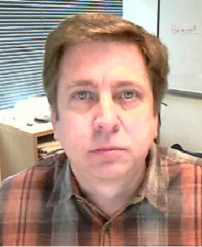 |
|
Ross Smith |
Robert Musson |







